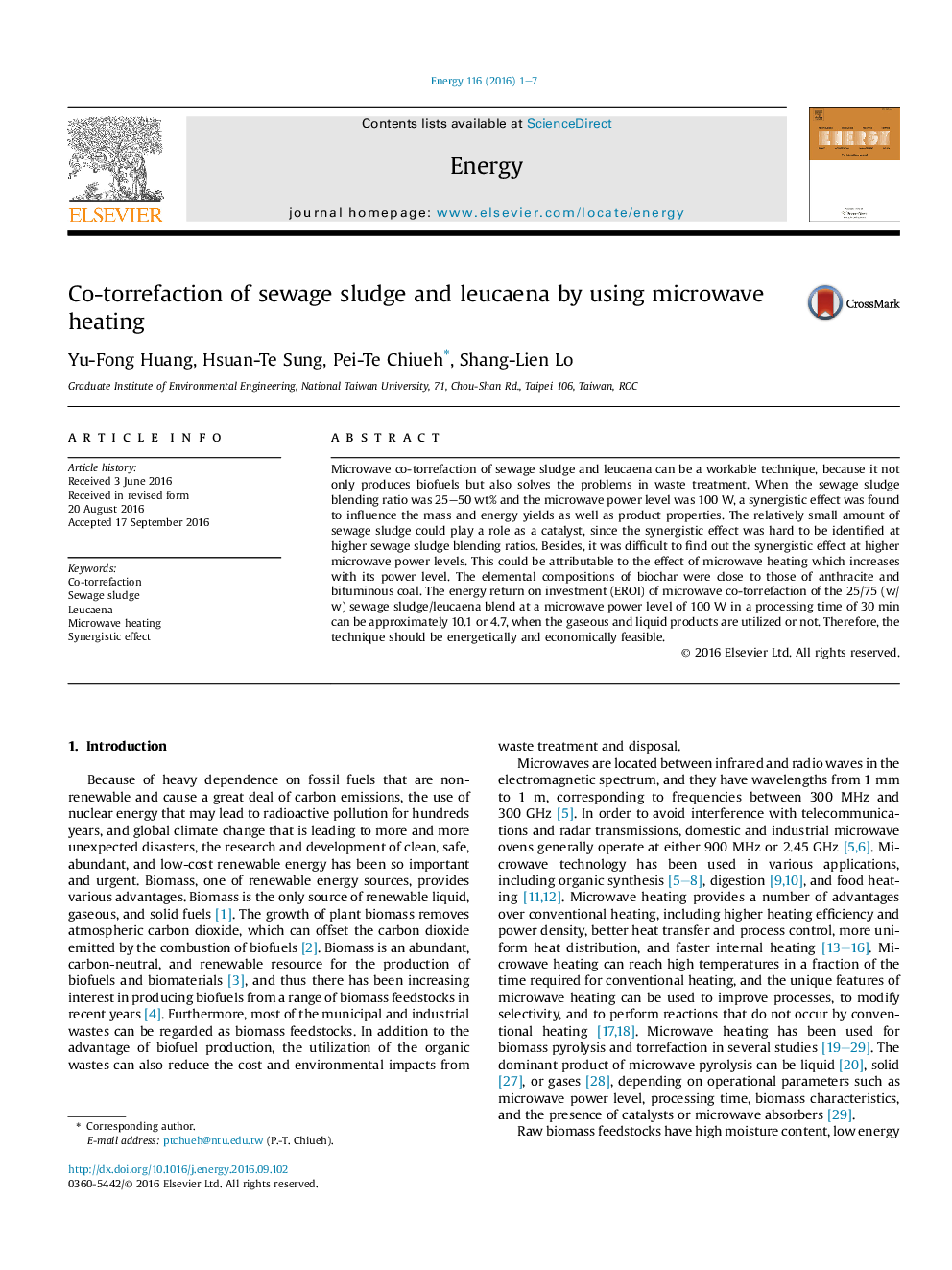| Article ID | Journal | Published Year | Pages | File Type |
|---|---|---|---|---|
| 5477265 | Energy | 2016 | 7 Pages |
Abstract
Microwave co-torrefaction of sewage sludge and leucaena can be a workable technique, because it not only produces biofuels but also solves the problems in waste treatment. When the sewage sludge blending ratio was 25-50Â wt% and the microwave power level was 100Â W, a synergistic effect was found to influence the mass and energy yields as well as product properties. The relatively small amount of sewage sludge could play a role as a catalyst, since the synergistic effect was hard to be identified at higher sewage sludge blending ratios. Besides, it was difficult to find out the synergistic effect at higher microwave power levels. This could be attributable to the effect of microwave heating which increases with its power level. The elemental compositions of biochar were close to those of anthracite and bituminous coal. The energy return on investment (EROI) of microwave co-torrefaction of the 25/75 (w/w) sewage sludge/leucaena blend at a microwave power level of 100Â W in a processing time of 30Â min can be approximately 10.1 or 4.7, when the gaseous and liquid products are utilized or not. Therefore, the technique should be energetically and economically feasible.
Related Topics
Physical Sciences and Engineering
Energy
Energy (General)
Authors
Yu-Fong Huang, Hsuan-Te Sung, Pei-Te Chiueh, Shang-Lien Lo,
